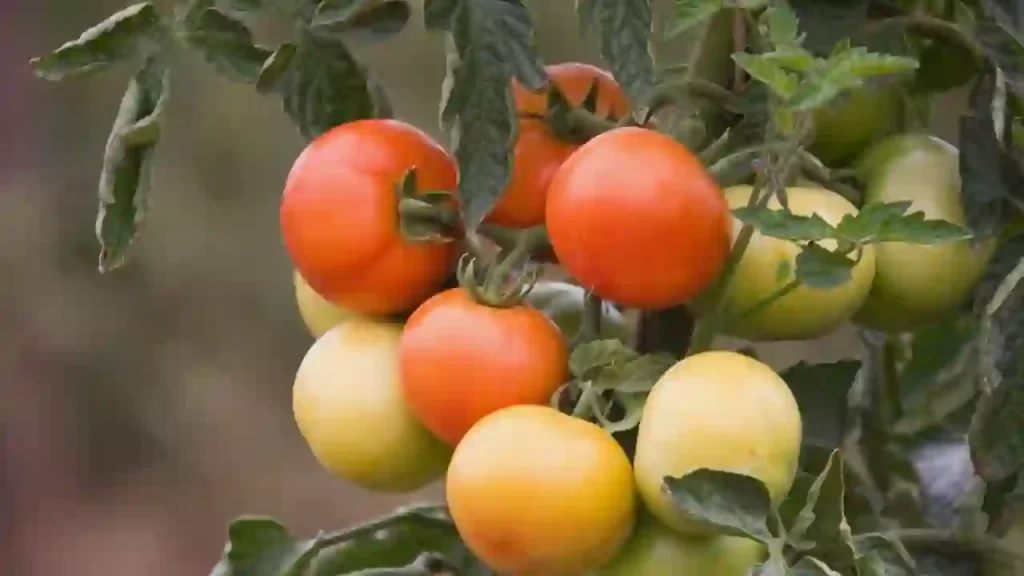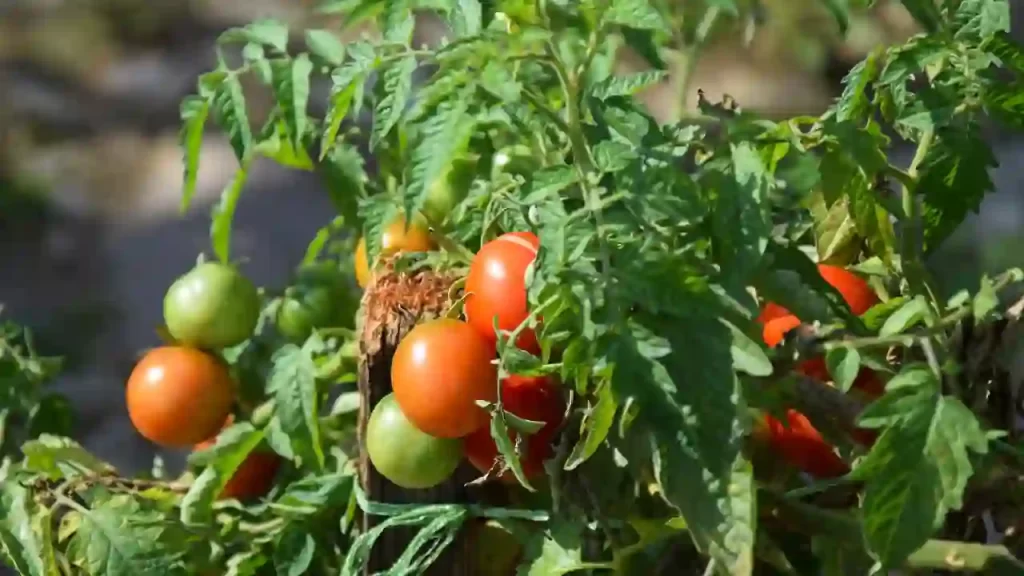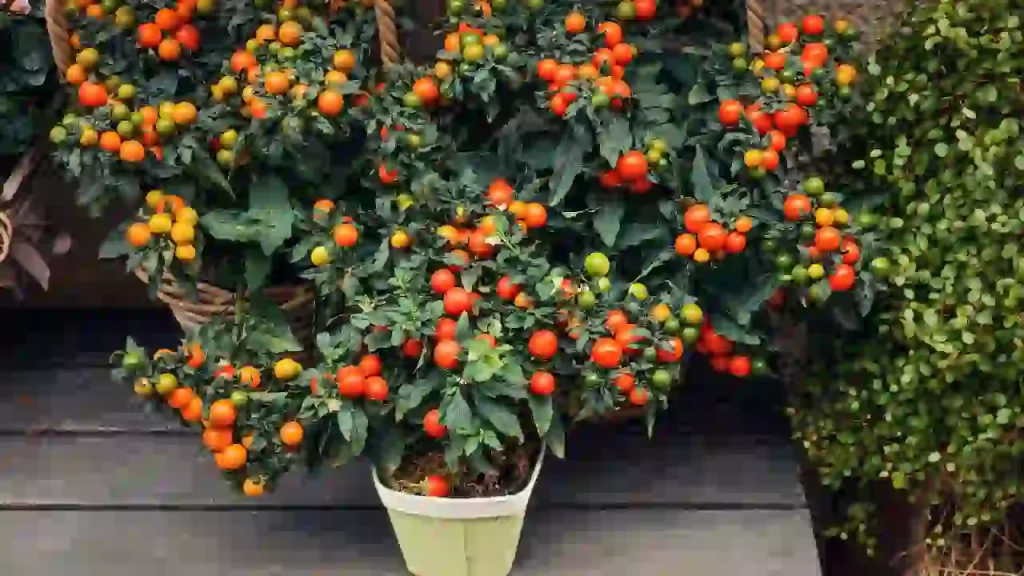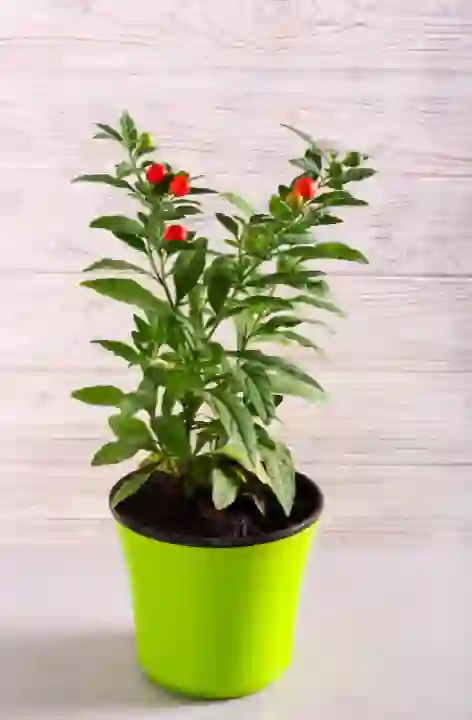Are you wondering about the tomato plants lifespan? Tomato plants are grown annually; the lifespan of tomato plants depends on whether they are grown outdoors or indoors.
So, How long can a tomato plant live? When planted outdoors, a tomato plant will usually survive for up to 6-8 months. However, when given the perfect conditions indoors or in controlled greenhouses, that same tomato can grow and thrive for a much longer period – between 2-5 years! Furthermore, if cuttings from those plants are taken and cultivated with care, their life expectancy could be nearly limitless.
Tomato plants are capable to bear fruit each season of their life, so that you can harvest tomatoes every year. (check out this article if your tomato plant is not setting fruit.)
Why Do Tomato Plants Die Each Year?

Tomato plants can only survive in warm weather conditions. Thus they are called non-hardy perennial plants and often die in winter. They can survive at least 10 degrees Celsius if taken care of properly. Tomatoes grown in southern California fight to survive in winter due to cold weather.
Most tomato plants become inefficient at producing fruits after their first fruit production. After six months of harvesting, your tomato plants start to die if they do not get warm.
At the same time, if you provide favorable conditions, they survive and are set to produce fruit in the next season too.
Tomato Plant LifeSpan

Many factors affect the tomato plant’s lifespan, like the growing location, weather conditions, and the type of sunlight they are exposed to.
How you take care of your tomato plants during the four stages of their life cycle, from their seedling to the fruiting stage, also affects their plant life.
Tomato Plant Life Cycle
There are a total of 4 stages in the tomato plant life cycle. Let’s know all the stages in brief.
Stage 1 – Seedling stage:
In this stage, seeds are prepared for their germination indoors, and you should initiate the process before 6-8 weeks of frost ends. This process is done indoors because warm soil is best for seed germination.
After 6-8 weeks of seedling, the plants grow up to 6-10 inches with purple leaves, which look like a “T” shape, and are set to grow outdoors in the ground without fearing frost.
Stage 2 leaf development:
After planting the tomato plants in the ground, they grow gradually and almost double in size every two weeks.
During this stage, before growing stem and flower buds, leaves, and roots of the plants are developed.
Stage 3 Flowering:
Small yellow flowers are seen in tomato plants during the end of spring or the start of summer. There are high chances of bad pollination and fall of blossomed flowers due to excessive heat.
Stage 4 Fruit Development:
After flowering, plant enters to fruit bearing stage where young tomato fruits are set on the plant and look like small green peas.
The fruits remain green for 45-50 days and start changing their color to red, pink, or orange, depending on the variety. The complete ripening process takes up to 70-80 days.
How Long Do determinate tomato plants live?
Determinate tomato plants typically have a relatively short life span of only one growing season, usually lasting two to three months.
While a determinate tomato plant does not continue producing fruit after this period, the foliage may keep growing for another month or so before dying back.
How long do indeterminate tomato plants live?
Most indeterminate tomato plants have a productive life span of about three to five years, depending on the variety and growing conditions. The plant may continue to produce tomatoes for many more years, but its production and quality will diminish over time.
Regular pruning is important to keep the older indeterminate tomato plant healthy and productive as they age. To maximize yields, consider replacing your indeterminate tomatoes plant every few years.
Can You Keep a Tomato Plant Alive All Year?
We generally say that nothing is impossible in this universe, and the same formula is set here also. If you put in a little extra effort, you can keep your lovely tomato plants alive year after year.
You can do so by following the below points to get fruitful results.
- As the tomato plants grow in warm conditions, always try to arrange for warmer conditions in winter for their survival and healthy life.
- Opt to grow your tomato plants in a greenhouse and indoors.
- Using a tarp during winter is an excellent option to protect your tomato plants in winter; you can also overcome frost danger.
- Using seedling heat mats to warm the soil is also low-cost and an excellent option to save your tomato plants during winter.
All the above measures enhance your tomato plants’ longevity and ensure their healthy growth.
How To Keep a Tomato Plant Alive for Years?
Tomatoes are very sensitive to cold and frost. It is crucial to arrange them in a warm environment to ensure their long life. It is an added advantage if you live in tropical climates.
Grow your tomato plants indoors to help them stay healthy during winter. Choose an area to keep your tomato plants indoors where your plant can get enough sunlight. This protects your plants from cold and provides extra heat, which keeps your plant healthy and provides long life.
For extreme cold conditions, tomatoes should be grown in a heated greenhouse. Though it is expensive, it can only save your plant in extremely cold situations and increase your plant’s life even when the weather is freezing. This way, you can keep your plants alive and healthy for years even if you don’t live in a tropical climate.
Do Tomato Plants Live More than One Year?
Tomatoes grown in tropical conditions have more than one year of life. American winters are too cold for the tomatoes to survive. The following points should be noted while growing tomatoes in your backyard or kitchen garden.
- Tomatoes are very delicate plants and need extra care.
- Arrange a warm environment during winter, as tomatoes cannot bear cold climates.
- Tomatoes should be grown indoors in warm conditions to increase their life by more than eight months. Outdoors-grown tomatoes can only survive up to 8 months.
- With the best possible care of tomatoes, you can stretch their maximum life to up to 5 years.
- Tomatoes should be grown in a heated greenhouse during winter.
- You can use a heat mat to keep the soil warm for faster tomato seeds’ germination.
How Long Can a Tomato Plant Live in a Greenhouse?
In a greenhouse, you can maintain various factors responsible for plants’ growth and long life. Climate can be easily controlled in a greenhouse.
By managing both temperature and humidity levels, tomato plants can live healthy for up to 3-5 years. Controlled climatic conditions also help the plants absorb adequate nutrients and water from the soil.
What Factors Trigger Tomato Plant Death
If you cannot provide the ideal growing conditions for tomato plants, you cannot save them from dying.
The death of your tomato plants can be caused by a range of environmental factors that are easily avoidable, including too-cold temperatures, over-watering, and under-watering, excessive use of fertilizers or pesticides, and incorrect soil moisture levels. Taking the proper precautions will ensure your tomatoes have all they need to thrive.
Use of Bad soil quality with less nutrients can lead to calcium deficiency in your tomato plants, making them inefficient to produce less tomatoes, and their life is compromised with deadly diseases.
At the same time, using a rich soil mix promotes the life and growth of your tomato plants.
As per the founder of Gardening Know How Heather Rhoades, “soil should neither be cracked and dry nor too soggy, and tomato plants should get at least 5 hours of exposure to sunlight.
How To Extend Your Tomato Plant’s Life?

You can easily extend your tomato plant life if you are successful enough to provide ideal growing environments.
Provide Ideal Growing Environment
Even during germination, the ideal temperature for tomatoes is 21-26 degrees Celsius. The seeds germinate within 5-7 days at this ideal temperature, which helps strengthen the plants’ leaves and stems during the development stage.
While planting the germinated seeds, using soil with a 6.2-6.8 pH range, a minimum of 6-8 hours of exposure to sunlight, proper watering, and good fertilizer with less nitrogen promote healthy growth and long life of the plants.
Use the Plant Companion Method For Healthy Growth
The plant companion method is best used for pest control in a healthy way, and soil quality is also improved with this method’s help.
Below are the best plants you can grow with tomato plants to ensure their health and long life.
Thyme: It prevents the egg production of worms and enhances the soil quality.
Basil: It acts as scent therapy and prevents tomato hornworms.
Fennel: Acts as a boon to creating more healthy tomato plants.
Cucumbers: Act as a natural weed controller.
Sweet potatoes: Control the spread of the virus and fungus, especially during the rainy season.
Harvest Your Tomatoes Before Ripening Begins
Tomatoes do not need nutrients to ripen the fruit; at this point, they stop absorbing nutrients. So it is best to pluck the tomatoes when they are half green and half pink. It will keep the tomatoes from compromising their quality.
Fertilize Routinely
The use of tomato-friendly fertilizer promotes the growth and life of tomato plants.
A fertilizer containing nitrogen, phosphorus, and potassium with a ratio of 18:18:21 is best for tomatoes. You can use Miracle-Gro for the best result.
The appropriate use of fertilizer for tomato plants is once every 2 weeks. It should be used in the 3rd stage, i.e., flowering and fruit-bearing. Please remember that excessive use of fertilizers can reduce the life of your tomato plants.
Identify & Treat Pest & Disease Issues ASAP
Always keep an eye on your plants to detect any pest or disease like fungus and act proactively to take proper action against it.
It would be best to water your plants in the soil, not foliage, constantly. Keep cutting the leaves if your tomato plants grow more than 3 feet. Timely use of good fertilizers can also resolve the issue.
Healthy Cuttings and Rooting
You can always opt for healthy cutting and rooting of your existing tomato plants in new beautiful containers and can get new tomato plants for free.
After May and June, most of the time, tomatoes need cutting after their first slot of tomato production. This is needed to increase the growth of the plant.
Instead of disposing of those cuttings, they can be rooted to grow more new plants, and in return, you are rewarded with more tomatoes.
Protect them from chilly weather by Bringing them Indoors

Act proactively to bring your tomato plants inside at the end of summer or before the start of frost. Keep an eye on the weather forecast and try to identify the frost. Take out your plants from the ground, replant them in a pot and bring them indoors if you want them to grow for next season too.
The use of a greenhouse at this stage is best suited as an ideal temperature of 21 to 26 degrees; you can easily maintain the required temperature.
When Should I Bring My Tomato Plants Inside?
As tomatoes cannot cope with cold weather, it is best to bring the tomato plants indoors at the end of summer or at the start of frost to protect them from cold.
As the temperatures continuously fall below 26 degrees Celsius, bring them inside for their long life.
Summary
Have patience while growing tomatoes in winter, as it is a delicate plant and needs so much care for their long and healthy life. If proper care and the right temperature are arranged, your tomato plant can survive even during winter.
Recent Posts
Are you ready to plant tomatoes for the best tomato harvest of your life? It all starts with getting the fertilizer right! Fertilizing tomatoes can seem daunting, but when done correctly, it’s...
9 Reasons Why Your Tomato Plants Wilting and How To Fix This!
When the gardeners see their lovely and precious tomato plants wilted, they become hopeless, sad, and impatient. But the situation can often be reversed with proper care and adopting a few good...
